Fire Put Out at Golden Ray Wreck Site
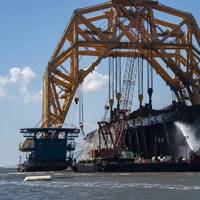
Engineers are assessing the condition of the Golden Ray wreck and salvage equipment after a fire ripped through the overturned and partially dismantled car carrier outside the Port of Brunswick, Ga. on Friday.The fire broke out on Friday afternoon aboard the Korean-owned Golden Ray, which has been aground on its side in the St. Simons Sound outside the nation's second largest car carrier port since it capsized shortly after departing the Port of Brunswick in September 2019.Firefighting…
Salvors Separate Stern Section from Capsized RoRo Golden Ray
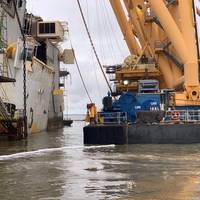
Salvage crews completed cutting operations to separate the stern section from the Golden Ray wreck in St. Simons Sound, Ga., on Saturday night, and the giant piece of the overturned car carrier will be craned onto a barge and hauled away for recycling.Once lifting preparations conclude, the Barge 455-8 will move into position to receive the separated hull section for transit out of the environmental protection barrier (EPB) surrounding the wreck to nearby Mayor’s Point Terminal for further sea-fastening before transport to Modern American Recycling Services (M.A.R.S.) in Gibson, La.
Polar Protection : New Ship Regulations come into force
With more and more ships navigating in polar waters, IMO has moved to address international concern about the protection of the polar environment and the safety of seafarers and passengers with the introduction of new regulations that all ships operating in these harsh and challenging waters must comply with. The mandatory Polar Code, for ships operating in Arctic and Antarctic waters, enters into force on 1 January 2017, marking a historic milestone in the work of the International Maritime Organization (IMO) to address this key issue. Its requirements, which were specifically tailored for the polar environments, go above and beyond those of existing IMO conventions such as MARPOL and SOLAS, which are applicable globally and will still apply to shipping in polar waters.
Milestone for Polar Protection
With more and more ships navigating in polar waters, IMO has moved to address international concern about the protection of the polar environment and the safety of seafarers and passengers with the introduction of new regulations that all ships operating in these harsh and challenging waters must comply with. The mandatory Polar Code, for ships operating in Arctic and Antarctic waters, enters into force on 1 January 2017, marking a historic milestone in the work of the International Maritime Organization (IMO) to address this key issue. Its requirements, which were specifically tailored for the polar environments, go above and beyond those of existing IMO conventions such as MARPOL and SOLAS, which are applicable globally and will still apply to shipping in polar waters.
New USCG Equipment Rule for Vessels Carrying Oil
The U.S. Coast Guard has finalized an interim rule that requires vessels carrying oil in bulk as cargo to carry discharge removal equipment, install spill prevention coamings and install emergency towing arrangements. The rule, due to take effect May 9, 2016, also requires that these vessels to have prearranged capability to calculate damage stability in the event of a casualty. The Coast Guard said this rulemaking aims to help reduce the risk of oil spills, improving vessel oil spill response capabilities and minimizing the impact of oil spills on the environment.
SUPSALV & Finding El Faro
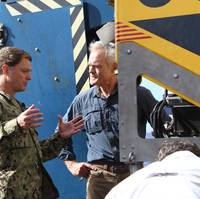
Last month we were offered an in-depth discussion on marine salvage with Captain Gregg W. Baumann, U.S. Navy, Director of Ocean Engineering, Supervisor of Salvage and Diving. Captain Baumann and his team have a long history regarding difficult missions accomplished, including most recently the location and filming of the lost TOTE containership El Faro. What is the scope of the responsibility of the Supervisor of Salvage & Diving; Director of Ocean Engineering? The responsibilities of the Supervisor of Salvage & Diving…
Update & Nav Warning: Upper Mississippi Rock Removal
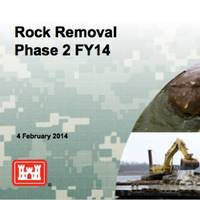
The Big River Coalition provides the following update on progress made by the contractors on the ongoing “Rock Removal” (pinnacle rock) project being conducted on the Upper Mississippi River (UMR) in the vicinity of Thebes, IL., as well as navigational warnings issued. The contractor has completed work at locations C-105 and C-106. Surveys are being preformed at locations: C-107, C-108, C-109 to verify that the contracted amount of material has been removed before declaring these sites are complete.
BSEE Launches Oil & Gas Containment Exercise

MWCC to Deploy Capping Stack in Gulf of Mexico. The Bureau of Safety and Environmental Enforcement (BSEE) has initiated the first ever drill designed to deploy critical pieces of state-of-the-art well control equipment to the ultra-deep seabed of the Gulf of Mexico in an effort to exercise the oil and gas industry’s response to a potential subsea blowout. The multi-week exercise, launched at 8:10 am CDT and employing the Marine Well Containment Company (MWCC), is part of a series…
Salazar Directs Deepwater Oil & Gas Containment Exercise
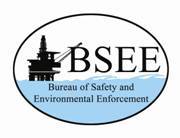
MWCC to Deploy Capping Stack for Exercise in the Gulf. As part of the Obama administration’s ongoing efforts to strengthen the oil and gas industry’s ability to respond in the event of a deepwater blowout and ensure that offshore oil and gas production can continue to expand safely and responsibly, Secretary of the Interior Ken Salazar today charged the Marine Well Containment Company (MWCC) with conducting a live drill this summer to deploy critical pieces of state-of-the-art well control equipment in the Gulf of Mexico.
First SCR NOx Removal System Installed on Coal Bulker
Aiming to Meet the IMO's Tier III NOx Emission Controls Nippon Yusen Kabushiki Kaisha, Oshima Shipbuilding Co. Ltd., Mitsubishi Heavy Industries Ltd., Akasaka Diesels Limited, and Sakai Chemical Industry Co., Ltd are to begin shipboard tests of selective catalytic reduction (SCR) nitrogen oxide (NOx) removal equipment installed on NYK Line's new bulk coal carrier Initial Salute, which was built by Oshima Shipbuilding. Shipboard trials of SCR NOx removal equipment were conducted during the voyage of Initial Salute. Once the equipment was verified to meet the tier III NOx emission controls stipulated by the International Maritime Organization (IMO),* it was decided to leave the equipment in place to collect more data through tests to be conducted during actual operational voyages.
CG Final Rule, Oil Spill Response Plans
The U.S. Coast Guard's Marine Safety, Security and Stewardship Directorate announced publication in the Federal Register of a final rule designed to improve pollution-response preparedness for vessels and facilities carrying or handling oil upon the navigable waters of the United States. This final rule, applicable upon all navigable waters of the U.S. including the exclusive economic zone and adjoining shorelines, updates Coast Guard requirements for oil-spill removal equipment associated with vessel response plans and marine transportation-related facility response plans. These regulatory updates add requirements for plan holders to use new response technologies and revise methods and procedures for oil spill response.
New Induction Coating Removal System Developed
Shipyard workers from Portsmouth Naval Shipyard have implemented an induction coating removal process that has reduced work execution costs and resulted in a safer work environment. Based on four available induction coating removal machines with trained personnel, this process has a potential cost avoidance of $655,000 per submarine availability and $2,620,000 per carrier availability. Once again Portsmouth Naval Shipyard has used Lean Manufacturing to improve productivity and reduce the Navy’s maintenance costs. Plastic Fabricator Tom Gardner has first-hand knowledge of the cost and time savings involved with the use of the induction coating removal process.
CNO Tours Portsmouth Naval Shipyard

Chief of Naval Operations (CNO) Adm. Gary Roughead gets hands-on experience in the operation of induction coating removal equipment during a tour of Portsmouth Naval Shipyard, from the Shipyard Commander, Capt. Robert Mazzone and the Shipyard Plastics Fabricator Richard Beaudion. U.S. Chief of Naval Operations (CNO) Adm. Gary Roughead toured Portsmouth Naval Shipyard here Jan. 8 as part of an eight-day trip visiting private and public shipyards throughout the U.S. The CNO is conducting the trip to help deepen his understanding of the shipbuilding industry. Joined by Sens.
Smit Provides Salvage Assistance
During May, SMIT Salvage dealt with casualties in Japanese waters and in the Red Sea. On May 1, the 260,619 dwt tanker Front Tobago was making for Japan when her main engine failed while proceeding off the Ryuku Islands, Japan. This 1993-built VLCC was carrying 240,00 tons of crude. An inspection revealed that the tanker’s crankshaft was damaged. The owners awarded SMIT a contract on May 2. The SmitWijs Singapore was mobilized to tow the Front Tobago to an anchorage outside the Economic Exclusion Zone, off Taiwan. On arrival, the cargo was discharged by ship-to-ship transfer. SMIT then mobilized the tug De Yue to tow the vessel from Taiwan to Singapore. The vessel arrived on May 23.
Marine Response Alliance Member Titan Maritime Wins Award
the recovery of oil from the sunken vessel S/S JACOB LUCKENBACH. award at the annual meeting of the Task Force in Honolulu July 22. response resulting in enhanced environmental protection. partnerships and involve the public are favored. Columbia, Washington, Oregon, California, and Hawaii. 2003 Award. southwest of the Golden Gate Bridge, in 175 feet of water. last two decades. Response, and the California State Lands Commission. contract with the U.S. Coast Guard. the oil inside a tank, and pump the oil to the surface. minimal risk of oil release. The difficult and often dangerous work continued for four months. worldwide. sensitive wildlife will be protected from exposure to oil spills. others in industry, government, and the public to emulate.
Ultrastrip Issued Patent
US' UltraStrip Systems, the developer of robotic ship hull cleaning equipment, has announced that it has received from the U.S. Patent and Trademark Office patent number US 6,564,815 titled "Air Gap Magnetic Mobile Robot". The new patent allows UltraStrip Systems to further expand its patented coatings removal systems. The advantages to the Air Gap patent over existing UltraStrip patented roller designs are greater adhesion and non-marring of the surface. President and CEO Dr. Robert O. Baratta said, "UltraStrip's latest patent, in our opinion, gives even greater patent protection for our M3500 Robotic System than we had with our earlier patents. UltraStrip Systems has received four other U.S.





